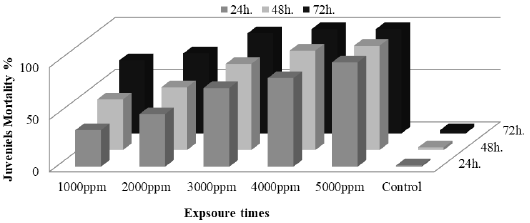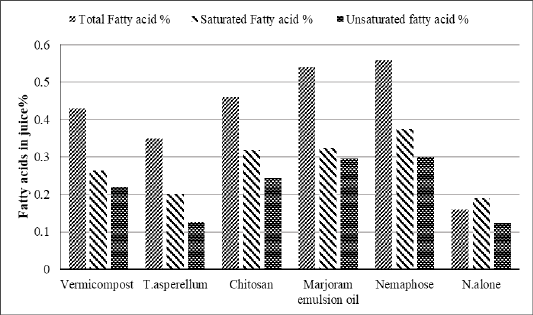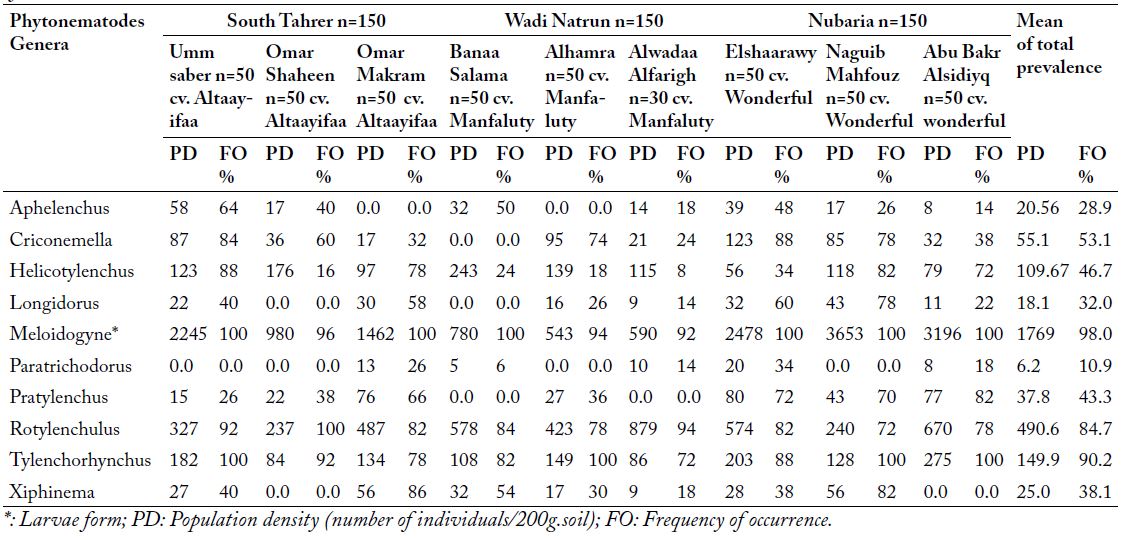Comparison of Eco-Friendly Control Strategies against Root-Knot Nematode in Relation to Growth and Fruit Yield of Pomegranate Orchards, with Special Reference to Structure of Plant-Parasitic Nematodes Community
Comparison of Eco-Friendly Control Strategies against Root-Knot Nematode in Relation to Growth and Fruit Yield of Pomegranate Orchards, with Special Reference to Structure of Plant-Parasitic Nematodes Community
Eman Alsayed Hammad and Atef Mohamed El-Sagheer
Effect of five concentrations of MEO on M. incognita juvenile mortality after three intervals of exposure time (In vitro).
Influence of Marjoram emulsion oil and three commercial bio-agents on total, saturated and unsaturated fatty acids of pomegranate juice as affected by M. incognita infection.
Structure of phytonematodes community inhabiting the rhizosphere of Pomegranate trees in different localities of Beheira Governorate.









